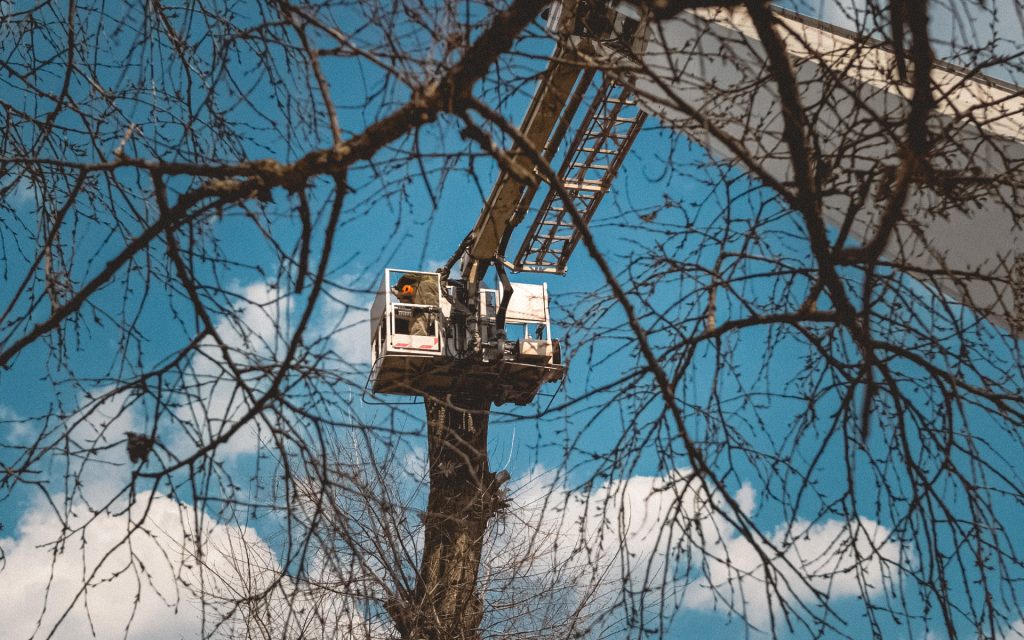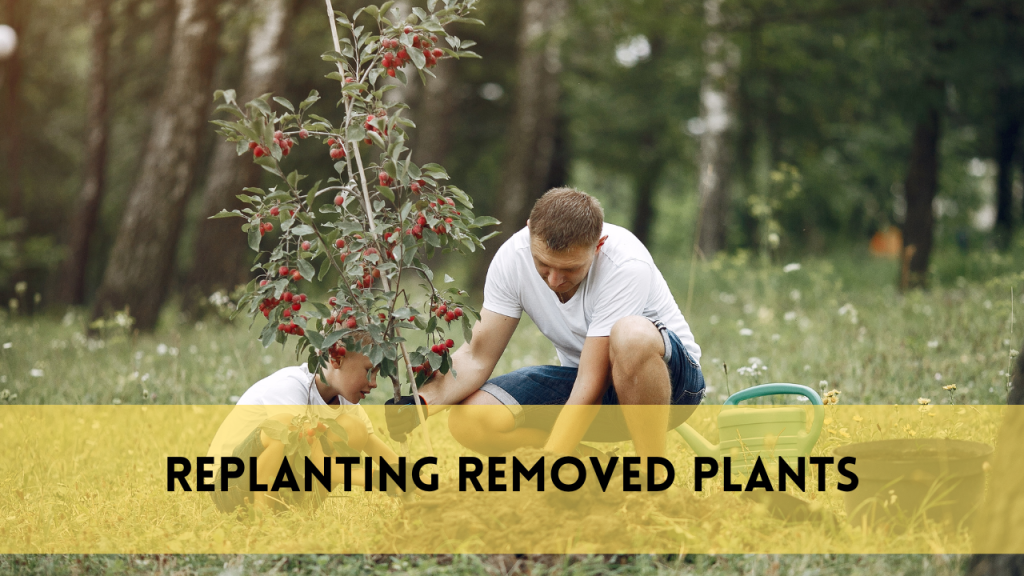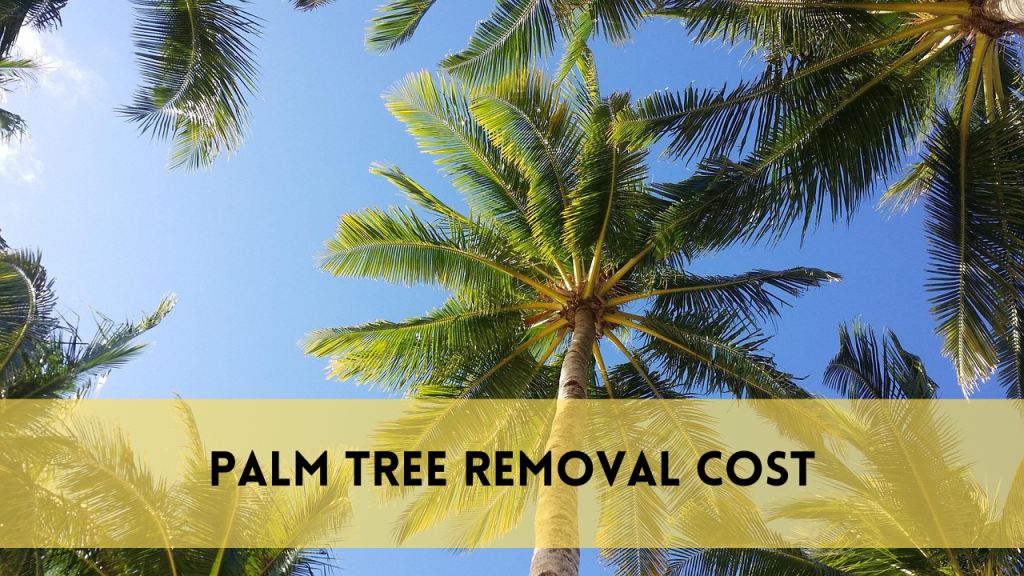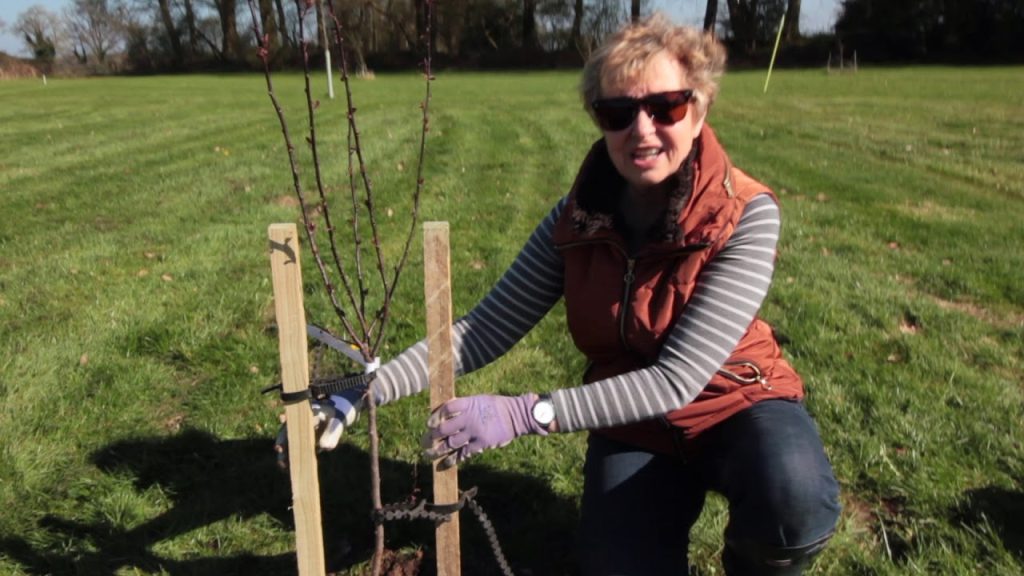Plants developing on tall trees can be an inescapable and concerning issue for the two mortgage holders and nature lovers. These plants, frequently alluded to as “climbing” or “crawling” plants, tend to fold themselves over the trunks and parts of tall trees, progressively surpassing them. This not just represents a danger to the actual trees yet additionally influences the general climate. In this Blog you will Learn about how to remove vines from tall trees?
At the point when plants grab hold of a tree, they can:
Plants contend with trees for fundamental assets like daylight, water, and supplements. They can debilitate the host tree by restricting its admittance to these assets, which might bring about hindered development and an expanded weakness to infections and nuisances. Over the long run, the heaviness of plants can put critical weight on a tree’s limbs and trunk. This additional weight can debilitate the primary respectability of the tree, making it more vulnerable to wind harm or even breakdown. Plants can deter perceivability, making it hard to recognize potential perils like dead branches or shaky tree structures. Furthermore, when plants develop uncontrolled, they might represent a gamble of falling on designs, vehicles, or individuals.
Sound trees are fundamental for a flourishing biological system.
Distinguishing the Kinds of Plants
A. Various kinds of plants that generally develop on trees
Prior to leaving on the evacuation cycle, it’s fundamental to distinguish the sorts of plants that might be developing on your tall trees. Normal plant assortments include:
English Ivy (Hedera helix): Conspicuous by its evergreen passes on and the capacity to move to extraordinary levels, English ivy can be intrusive and testing to eliminate.
Virginia Creeper (Parthenocissus quinquefolia): This local plant has five-lobed leaves and frequently turns dynamic shades of red and orange in the fall.
Poison Ivy (Toxicodendron radicans): Infamous for its aggravating oils, poison ivy can cause skin rashes. Recognizing and securely eliminating it is vital.
Wisteria (Wisteria spp.): Known for its dazzling purple or white blossoms, wisteria plants can be outwardly engaging however require cautious administration.
Kudzu (Pueraria montana): Frequently alluded to as “the plant that ate the South,” kudzu is a quickly developing, intrusive plant that can cover trees and other vegetation.
B. Step by step instructions to distinguish the particular sort of plant on your tree
Recognizing the particular sort of plant on your tall trees might require nearer review. Search for the accompanying attributes:
Leaves: Analyze the shape, size, and course of action of leaves. Observe any extraordinary qualities, like curves, serrations, or variety.
Development design: See how the plant climbs. A few plants use ringlets, while others grip with elevated roots or cement plates.
Blossoms or natural product: On the off chance that present, roses or natural product can be useful in ID. Note their variety, size, and shape.
Bark and stem: The plant’s bark and stem might give extra insights. A few plants have unmistakable surfaces or varieties.
Development area: Consider where the plant is developing on the tree. Different plant species might favor specific pieces of the tree, like the storage compartment, branches, or covering.
Understanding the particular kind of plant you’re managing will illuminate your expulsion technique and assist you with playing it safe, particularly while managing harmful or obtrusive species like toxic substance ivy or kudzu.
With this data, you’ll be more ready to handle the issue of plants on tall trees methodically and securely. The following segments of the blog entry will direct you through the method involved with surveying what is going on and arranging your plant evacuation procedure.
Surveying What is going on
- Looking at the degree of plant development on the tree
Before you start the evacuation cycle, evaluating the degree of plant development on the tree is critical. This includes:
Stroll around review: Go for a stroll around the tree to get a total perspective on the plants. Note how high they’ve climbed, where they’ve joined to the tree, and whether they’ve spread to other close by trees or designs.
Shelter review: On the off chance that the tree has a thick shelter, cautiously review the upper branches for buried plants. These plants can frequently slip through the cracks yet contribute fundamentally to the issue.
Trunk examination: Look at the storage compartment of the tree for thick plants or any indications of harm, for example, choking influences or breaks brought about by the plants.
B. Distinguishing any potential security risks
As you evaluate what is happening, be keeping watch for security dangers and primary harm:
Weight appropriation: Decide whether the heaviness of the plants is causing any perceptible inclining or shifting of the tree. This could show primary precariousness.
Dead or debilitated branches: Check for dead or debilitated branches brought about by the plants. These branches are bound to break and represent a danger.
Perceivability impediment: Consider whether the plants discourage perceivability on your property or represent a gamble to walkers, vehicles, or close by structures.
C. Deciding the strength of the tree and its capacity to endure expulsion
Evaluate the general well being of the tree to guarantee it can endure the expulsion interaction:
Vitality: Search for indications of imperativeness, like solid leaves, solid development, and a full shade. A solid tree is bound to recuperate from plant evacuation.
Stress pointers: Check for pressure pointers like dead branches, diminishing foliage, or indications of sickness. A tree currently under pressure might require extraordinary consideration during and after plant evacuation.
Tree species: Think about the types of the tree. A few trees are stronger than others with regards to plant perversions.
Evaluating what is happening completely will assist you with settling on informed conclusions about how to continue with the plant evacuation and whether you really want to avoid potential risk to guarantee the security and soundness of the tree.
Security Safety measures
A. Significance of security while chipping away at tall trees
Security ought to constantly be your first concern while managing tall trees and plant expulsion. Working at levels conveys intrinsic dangers, and these dangers increment while managing possibly unsteady trees with plants. The significance of security couldn’t possibly be more significant, as it safeguards you as well as people around you.
B. Required security stuff and hardware
Individual defensive hardware (PPE):
Helmet: Shields your head from falling flotsam and jetsam.
Security glasses or goggles: Safeguards your eyes from garbage and potential plant sap.
Gloves: Gives hand insurance from thistles, aggravations, or sharp devices.
Long-sleeved attire: Forestall skin contact with harmful plants like toxin ivy.
Climbing gear (if important):
Wellbeing tackle: Fundamental for climbing tall trees, guaranteeing you’re gotten consistently.
Grappling ropes: Utilized related to the outfit to climb and slide securely.
Carabiners and pulleys: Secure ropes and work with development.
Ascenders and descenders: Help with climbing and controlled drop.
Tree spikes or gaffs (if expertly prepared): Help in climbing yet require specific preparation.
Apparatuses for plant evacuation:
Pruning shears or loppers: Utilized for cutting plants at the base.
Hand saw or pruning saw: Supportive for thicker plants.
Post pruners or shaft saws: Expand your range for high branches.
Herbicide (if essential): Used to treat cut plant closes and forestall regrowth.
Ladders:
Pick a durable, non-conductive stepping stool in the event that it functions close to electrical cables.
Guarantee legitimate arrangement and steadiness.
C. Ways to guarantee a protected workplace
Pal framework: Whenever the situation allows, have another person present to help or call for help in the event of a crisis.
Remain hydrated and enjoy reprieves: Tree work can be genuinely requesting, so drink a lot of water and enjoy ordinary reprieves to forestall exhaustion.
Weather patterns: Try not to work in unfriendly weather patterns like high breezes, rainstorms, or cold circumstances.
Secure apparatuses: Guarantee apparatuses are appropriately gotten to your individual or gear to forestall coincidental drops.
Communication: Lay out clear correspondence with anybody on the ground. Use transmissions or two-way radios if essential.
By focusing on security and utilizing the suitable stuff and hardware, you’ll limit the dangers related with eliminating plants from tall trees and guarantee a more secure and more effective expulsion process.
Devices and Materials
A. Rundown of devices and materials required for plant evacuation
To actually eliminate plants from tall trees, you’ll require the accompanying instruments and materials:
Pruning Shears or Loppers: These are fundamental for slicing more modest plants near the tree’s base. Pick ones with long handles for expanded influence.
Hand Saw or Pruning Saw: Utilize a hand saw for thicker plants that pruning shears or loppers can’t deal with. Search for a saw with a sharp, serrated edge intended for slicing through wood.
Post Pruners or Shaft Saws: These apparatuses are helpful for coming to and cutting high branches and plants. They consist of an extending shaft with a cutting head toward the end.
- Wellbeing Stuff
- Head protector
- Wellbeing glasses or goggles
- Gloves
- Long-sleeved attire
Herbicide (if essential): Pick a reasonable herbicide for treating slice plant closures to forestall regrowth. Adhere to the producer’s guidelines and wellbeing safety measures.
Stepping stools (if essential): Select a proper stepping stool for your particular requirements and guarantee it’s steady and secure.
Climbing Hardware (if important):
- Security tackle
- Grappling ropes
- Carabiners and pulleys
- Ascenders and descenders
- Tree spikes or gaffs (if expertly prepared)
B. Clarification of each instrument’s motivation and how to utilize them
Pruning Shears or Loppers: Pruning shears are intended for cutting little plants and branches up to around 1 inch in measurement. Just position the cutting edges around the plant and make spotless, speedy cuts.
Hand Saw or Pruning Saw: Utilize a hand saw for thicker plants that pruning shears or loppers can’t deal with. Make cautious, controlled slices to try not to harm the tree.
Post Pruners or Shaft Saws: Stretch out the extending shaft to arrive at high plants. Position the cutting head around the plant, and utilize a cutting or slicing movement to eliminate it. Guarantee the cutting head is sharp for productive cutting.
Wellbeing Stuff: Security gear is urgent to safeguard yourself during the evacuation interaction. Wear a cap to defend your head, wellbeing glasses or goggles to safeguard your eyes, gloves to safeguard your hands, and long-sleeved dress to forestall skin contact with aggravations.
Herbicide (if essential): On the off chance that you’re managing especially industrious plants, a herbicide can help forestall regrowth. Apply it to the cut finishes of the plants following cutting, adhering to the producer’s directions cautiously.
Stepping stools (if essential): While utilizing stepping stools, guarantee they’re on stable ground and set up as indicated by the maker’s guidelines. Continuously keep in touch with the stepping stool, and abstain from overextending.
Climbing Hardware (if important): Climbing gear is for further developed undertakings including tall trees. Assuming you’re utilizing climbing hardware, it’s essential to have legitimate preparation and involvement with tree climbing and wellbeing systems.
Having the right instruments and materials for plant evacuation is fundamental for an effective and safe cycle. Ensure your apparatuses are in great working condition, and take as much time as is needed to find out more about their legitimate use prior to beginning the expulsion cycle.
6: Evacuation Cycle
A. Essential: Acquiring any essential licenses or authorizations
Before you begin eliminating plants from tall trees, it’s vital to check in the event that you require any licenses or consents, particularly assuming that the trees are on open land or part of a safeguarded region. Contact your nearby specialists or land the board offices to guarantee you’re in consistency with guidelines.
B. Eliminating lower plants securely
Put on your security gear: Focus on security by wearing the important individual defensive gear (PPE).
Distinguish the foundation of the plants: Start with the lower plants that are near the ground. Find where the plants are connected to the tree trunk or roots.
Cut the plants at the base: Use pruning shears or loppers to cut the plants at their base, as near the tree as could be expected. Make clean slices to forestall harming the tree.
Eliminate separated plants: In the wake of cutting, delicately pull the plants from the tree, taking consideration not to upset the tree’s husk or branches.
Discard the plants: Place the eliminated plants in an assigned region for removal, following nearby guidelines for green waste or fertilizing the soil.
7: Managing Root foundations
Managing the root foundations of plants is a significant part of complete plant expulsion, particularly if you need to forestall regrowth. While numerous plants are basically elevated and don’t have broad underground roots, some might have root foundations that add to their tirelessness. This is the way to really deal with root foundations:
A. Checking for Ground-Based Root foundations
Review the region around the tree: Search for indications of ground-based root foundations, which might reach out from the foundation of the plant. These roots might be more articulated for some plant species, similar to English ivy or wisteria.
Cautiously dig around the base: Utilizing a little hand scoop or nursery scoop, dig around the foundation of the plant to uncover the underground root growth. Take care not to harm the tree’s own root foundation during this interaction.
Eliminate the roots: Utilize your digging device to tenderly eliminate the plant roots from the dirt. Be intensive, as leaving even little areas of root can prompt regrowth.
Discard the root material: Place the eliminated establishments in an assigned region for removal, following neighborhood garbage removal guidelines.
B. Procedures for Eliminating or Controlling Root foundations
Manual expulsion: For more modest plants with restricted root foundations, manual expulsion as depicted above might get the job done. Guarantee you eliminate however much of the root material as could be expected to forestall regrowth.
Herbicide application: In situations where you experience determined or obtrusive plant species, consider applying a fitting herbicide to the uncovered roots. Adhere to the producer’s guidelines cautiously and utilize an item explicitly intended for controlling the sort of plant you’re managing.
Mulching and arranging texture: After root evacuation, consider applying a layer of mulch around the foundation of the tree. This can assist with covering any leftover root pieces and keep them from regrowing. Also, you can utilize arranging texture to repress root development.
Customary checking: Indeed, even in the wake of eliminating the plants and their underground roots, it’s vital to screen the region for any indications of regrowth. Plants are strong, and some might endeavor to return. Expeditiously address any regrowth to forestall a reinfestation.
Tree wellbeing upkeep: To guarantee the tree stays sound and strong, go on with a legitimate tree care routine, including standard watering, pruning, and preparation on a case by case basis. A solid tree is less powerless to future plant perversions.
Managing plant underground roots is a pivotal move toward guaranteeing the effective evacuation and long haul counteraction of plant regrowth. By being exhaustive and careful, you can safeguard your trees and scene from the determined infringement of climbing plants.
8: Post-Expulsion Care
After effectively eliminating the plants from your tall trees, it’s fundamental to give present expulsion care to guarantee the tree’s wellbeing and limit the gamble of regrowth. Follow these moves toward care for your tree appropriately:
A. Assessing the Tree for Any Harm or Wounds
Visual review: Cautiously inspect the whole tree, from its underlying foundations to the most noteworthy branches, for any injuries, scars, or harm brought about by the plants. Give close consideration to regions where the plants were appended.
Note any worries: On the off chance that you notice any regions where the bark is harmed, branches are debilitated, or wounds are available, make a note of these areas. Distinguishing harm early permits you to immediately address it.
B. Treating Wounds and Advancing Tree Wellbeing
Clean cuts and wounds: In the event that there are any cuts or wounds on the tree caused during the plant expulsion process, clean them with a delicate stream of water to eliminate trash and microbes.
Pruning harmed branches: In the event that you distinguish debilitated or harmed branches, think about pruning them back to solid tissue. Make clean cuts right external the branch collar to work with legitimate recuperating.
Apply wound dressing: To safeguard the tree from infections and vermin, apply a tree wound dressing or pruning sealant to any critical injuries or cuts. Adhere to the item’s guidelines for application.
Prepare and water: To support the tree’s recuperation, consider treating with a decent, slow-discharge compost suitable for the tree species. Guarantee the tree gets satisfactory water to help new development and recuperation.
Discarding Plants
After effectively eliminating plants from your tall trees, it’s critical to discard the plants appropriately and capably. Legitimate removal keeps the plants from restoring as well as guarantees you’re naturally cognizant. Follow these means for suitable plant removal:
Related Posts:
A. Appropriate Removal Strategies for Eliminated Plants
Fertilizing the soil (if suitable): In the event that the plants are harmless and not polluted with pesticides or herbicides, you might consider fertilizing the soil with them. Guarantee that you cut the plants into more modest parts of help in deterioration. Try not to compost obtrusive species, as they might in any case fill in the fertilizer heap.
Civil green waste assortment: Numerous regions offer curbside assortment or drop-off locales for yard squander, including plants. Contact your nearby waste administration office to ask about green garbage removal choices and rules.
Neighborhood reusing focuses: Some reusing focuses acknowledge yard squander, including plants. Check with your neighborhood reusing offices to decide whether they have explicit prerequisites for plant removal.
Landfill removal: In the event that no other removal choices are accessible, you can discard the plants in a landfill. Be that as it may, this ought to be your final retreat, as it’s the least harmless to the ecosystem choice.
Conclusion
In the excursion of figuring out how to eliminate plants from tall trees, you’ve obtained fundamental information and techniques to safeguard your trees and keep a sound, dynamic scene. Plants can contend with trees for fundamental assets, debilitate them, and make them more powerless to illnesses and vermin. Eliminating plants is significant for the wellbeing and life span of your trees. Plants discourage perceivability, present security perils, and can harm structures during storms. Plant evacuation improves wellbeing for you, your property, and your local area. Eliminating plants reestablishes the normal excellence of your trees and scene, permitting you to partake in an all the more outwardly engaging climate.
FAQs
Are plants harmful to trees, or are some valuable?
Not all plants are destructive to trees. A few plants have cooperative associations with trees and give benefits, for example, expanded environmental variety and food hotspots for untamed life. In any case, it’s fundamental to distinguish intrusive or unsafe plant species that can choke and harm trees. Appropriately distinguishing the sort of plant on your tree is urgent prior to choosing whether to eliminate it.
Could I at any point utilize herbicides to control or eliminate plants from trees?
Indeed, herbicides can be utilized to control or eliminate plants from trees, yet alert is fundamental. Continuously adhere to the maker’s guidelines, and be aware of likely damage to the tree. Herbicides are normally applied to the cut closures of plants following evacuation to forestall regrowth. Think about involving herbicides if all else fails and investigate non-substance evacuation strategies first.
Might plants at any point come back after evacuation, and how might I forestall regrowth?
Indeed, a few plants can regrow from root sections or seeds even after evacuation. To forestall regrowth, it’s crucial to eliminate however much of the root foundation as could reasonably be expected, apply herbicides to cut closures, and carry out preventive estimates like mulching, normal support, and actual hindrances. Ordinary investigations and brief expulsion of any new development are likewise key to forestalling regrowth.
When is the best chance to eliminate plants from tall trees?
The best opportunity to eliminate plants from tall trees is commonly during the lethargic season (pre-winter to spring early). During this period, the tree is less worried, and there are less leaves, making it more straightforward to recognize and get to the plants. Notwithstanding, assuming the plants represent a prompt wellbeing peril or are obtrusive, expulsion might be vital out of the blue of the year.



